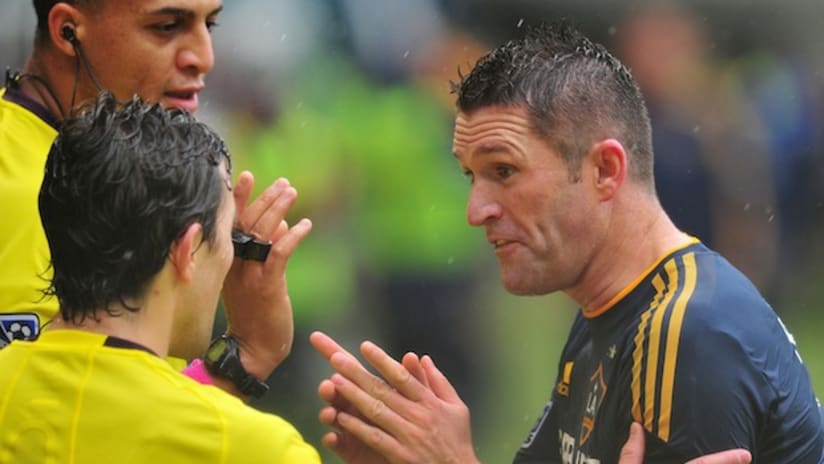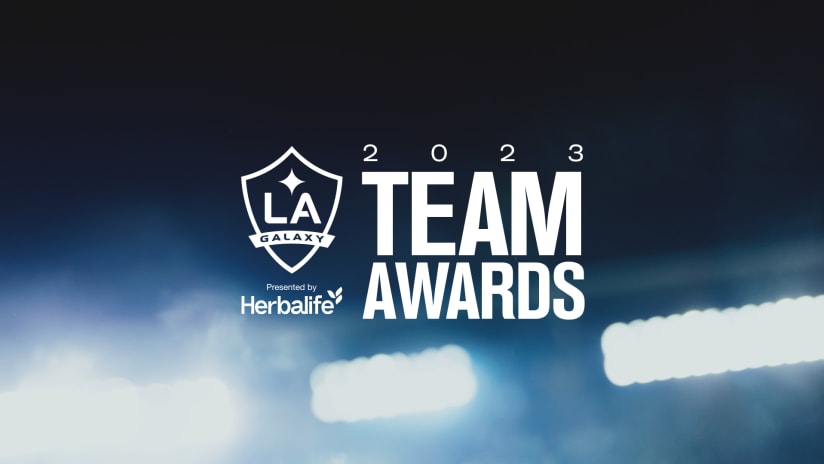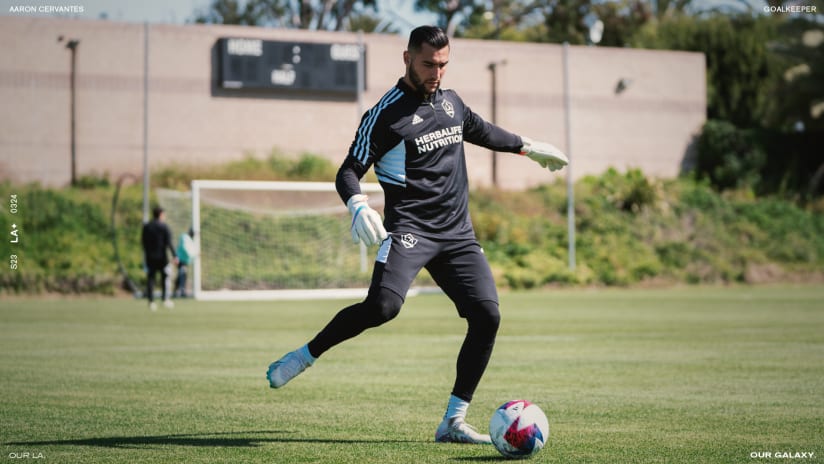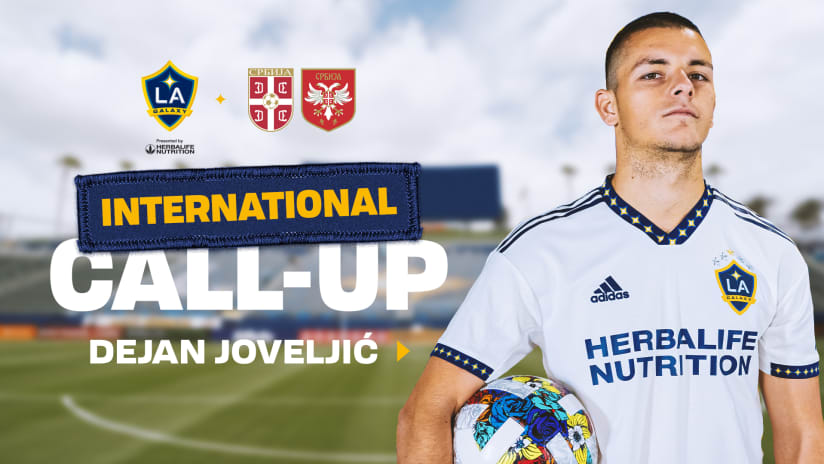CARSON, Calif. –The offside rule is a topic for debate nearly every time an Assistant Referee raises his flag, but what exactly does it mean?
FIFA’s Law 11 states that a player in an offside position is one that has “any part of his head, body or feet is nearer to his opponents' goal line than both the ball and the second-last opponent.”
And when determining any offside call, an Assistant Referee must decide three things: 1) Is the player interfering with play? 2) Is the player interfering with an opponent? 3) Is the player gaining an advantage from being in that position?
Sounds simple enough, right? But in many occasions, it isn’t.
Following the decision by Assistant Referee Eric Boria to negate a Robbie Keane stoppage time equalizer during the LA Galaxy’s 1-0 defeat to the Portland Timbers on Sunday, I decided to investigate the true meaning and interpretation of the offside rule and FIFA’s Law 11 by speaking with the Professional Referee Organization’s Training and Development Manager Paul Rejer.
A former Premier League official, Rejer was appointed to his current position in November 2012 after nine years in charge of EPL linesmen at the Professional Game Match Official Board. As a person that works closely with PRO’s general manager Peter Walton and someone with expertise at dealing with linesmen, Rejer was a perfect candidate to discuss the controversy surrounding the Keane decision—or as he put it, a lack thereof.
“The call is one where [Keane is] leaning forward and in an offside position because the law states that any part of his head, body or feet is in an offside position or, in other words, any part of his body that can score a goal is deemed to be offside,” Rejer told LAGalaxy.com. “What the Assistant Referee has to do is then wait and see if Keane plays the ball. In that particular moment of time, he had to know that Keane was offside and then wait and see if he challenged for the ball or played the ball. If he did then his flag goes up. If any other forward had touched the ball then his flag would stay down.
“That’s the call that he has to make and, really, on those free kick plays where it isn’t as difficult as those in the run of play, I’d expect him to get him right,” said Rejer, who also noted that if Keane’s outstretched hand had been offside, but the player level with the defensive line, it would not be offside.
The interpretation on the Keane play may seem cut and dry, but decisions on offside calls rarely are. In particular, LA head coach Bruce Arena noted following Galaxy training on Tuesday that in the past if a player could “see daylight” between himself and the defender then he was onside, but Rejer admits that that way of thinking is gone.
“That was never in the laws of the game,” said Rejer of the ‘daylight’ reference.” I think that what happened was back in 2005 when Law 11 was clarified; FIFA was encouraging AR’s to keep the flags down because they wanted to see more goals in the game. At that time, Phillip Don, who was in charge of the referees in England said that ‘we want daylight between the players to determine offside’ but that was never in the laws of the game. When Don said that, he was told off by FIFA and that’s where that originated from.
“In 2005 when I was involved with the Premier League officials, we used to say that there was a tolerance level with offside decisions, so if a player was only slightly offside, we’d say keep the flag down,” added Rejer. “But the problem is with the way that AR’s have developed with the superior training that they get now, there’s no tolerance level because they’ve gotten that good and that accurate with the decisions. I’m not saying that they’re always going to be right all the time because there is still human error involved, but we now judge them on those fine margins. It’s as simple as that now.”
Although the Keane call was a “clear and accurate one” in the eyes of Rejer that is not to say that there are not ambiguities and errors when it comes to the rule. As Rejer noted, there is error involved in the two FC Dallas goals during LA’s 3-3 draw on Aug.11 that PRO’s Training and Development Manager later stated should have been disallowed.
As for the ambiguity, Rejer believes that the grey area is found primarily when it comes to last two definitions of an offside call. Interestingly enough, another disallowed Galaxy goal, which also involves Keane, is Rejer’s prime example. This example came during the Galaxy’s 1-0 victory over Chivas USA when Robbie Rogers’ strike in the 33rd minute of the first half was negated by referee Hilario Grajeda and AR Frank Anderson due to Keane’s stance in front of Chivas ‘keeper Dan Kennedy once the ball was struck.
“That was correctly disallowed because Keane was interfering with the goalkeeper’s line of vision, but sometimes, there can be grey area because for one, how can you really know if a player is obstructing vision of a goalkeeper. Both the referee and the AR need to make a decision, but that truly is a judgment call,” said Rejer. “ Now FIFA have said, that if the ball takes a rebound or a deflection that goes an offside player that he is offside, but if the player plays the ball to the player in the offside position then he’s onside. However, this is simply down to an opinion, so that’s a grey area.”
Although this grey area is part of “the beautiful game,” Rejer admits that it would certainly be positive if FIFA could take it upon themselves to reword Law 11 in order to provide for more clarity.
“It’s not a particular problem, but it just adds to the debate. It would be nicer in my opinion if FIFA could reword the laws a little bit better so people could interpret the law a bit clearer,” said Rejer. “At the moment, it’s just left open to interpretation and I don’t think that any law should be open for interpretation. However, the interpretation when it comes to Keane’s goal is black and white really. It’s the other aspects of the offside law that there are grey areas that may need to be tightened up.”
Ambiguities with Law 11 and others notwithstanding, as PRO continues to work at improving the quality of officiating in MLS, Rejer is pleased with the ever improving class of the league’s officials.
“We get the impression that people are pleased. Certainly, I know that Nelson Rodriguez is happy with the way that the referees are improving,” Rejer concluded. “Whenever I speak to any coaches, they also seem to be positive about our direction. The referees are also very happy with the way things are going.”
Adam Serrano is the LA Galaxy Insider. Read his blog at LAGalaxy.com/Insider and contact him at LAGalaxyInsider@Gmail.com






